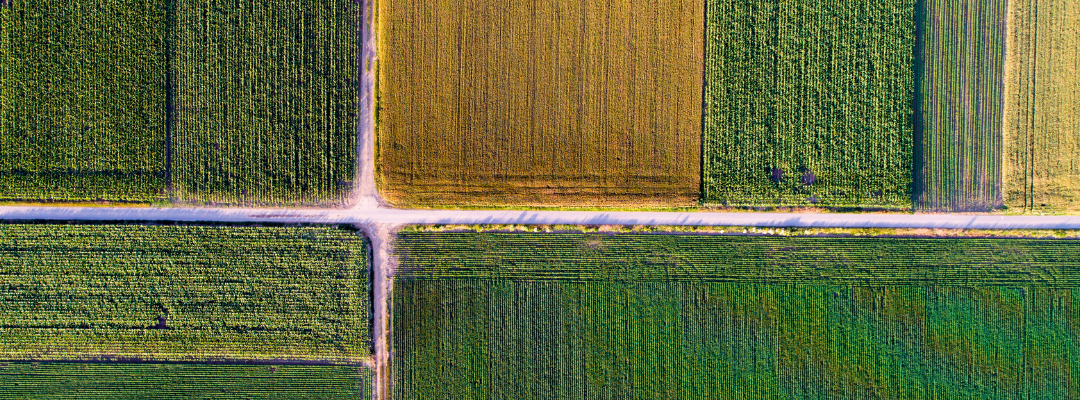Seed breeding advancements are critical to the future of our world – and, over the past several decades, there have been some amazing innovations to propel us ahead. With a drive towards more sustainable farming practices and augmenting the amount of food we can grow and produce each season, there has never been a more important time for innovation within our fields.
Accurate, efficient, and reliable data in plant breeding is a crucial part of helping to advance our seed breeding technologies, helping to provide essential data to understand which seed traits may perform better under which conditions. It doesn’t stop there – this data can also help build a story over time. Year-over-year trend data and insight into historical seasons can build a bridge into understanding how future research trials should be set up.
This is important for a few different reasons – mostly because it can help increase the velocity of research and product development. Given the seasonal nature of agriculture, this can be described as a gamechanger.
Another gamechanger for the industry? Remote sensing.
Remote sensing provides valuable measurements and data that allow breeders to make more informed decisions regarding crop improvement in health and yield. Researchers and developers seek to create seeds that promote improvements in growth and yield. There is no room for errors in a sector of agriculture that is essentially the root of productivity.
This is where tools like remote sensing jump in to provide more efficient and precise data for reliable analysis. So, how exactly can remote sensing be used to drive innovation forward in seed breeding?
Using Remote Sensing to Gain Insight into Growth and Yield
From early season to end, getting a deeper look into the behavior and growth of plants assists in predicting yield – acquiring the necessary information needed to determine the overall performance of the seed. Tools like multispectral indices (i.e., NDVI and NDRE) advance remote sensing capabilities by uncovering key indicators of crop health, growth, and predicting yield. Imagery captured by remote sensing detects vegetation’s vigor and greenness, which assists in uncovering stress, growth patterns, and identifying any variations of concern.
Let’s use a real-world example to talk about this further. The 2022 17th International Conference on Emerging Technologies (ICET), analyzes how UAV imagery plays a role in analyzing vegetation indices for cotton crop in South Asia. Due to a decline in cotton production within the region, the researchers studied and analyzed cotton growth patterns by using remote sensing technologies to enhance crop yield and quality. Because the vegetation indices are calculated at different growth stages for the crop, it provides insight into plant health and yield before symptoms appear.
The researchers used an aerial drone sensor that captured NDVI – and validated it with Sentinel-2A satellite imagery. They concluded that vegetation indices computed using multispectral UAV images did capture vital insight into the progression of crop phenology and growth pattern.
Today, remote sensing can go beyond vegetative indices as we are able to extrapolate essential data points from the imagery – and generate plant-level measurements for deeper insight into performance. This is done via data science – or the ability to translate imagery into data points due to machine learning and artificial intelligence.
So, with that, you can take it a step further to get data sets around Canopy Cover, for instance. This analytic helps to characterize growth stage, development, and maturity by providing plant-level measurements and subplot analytics – like standard deviation, percent of the plot covered by vegetation, and min and max subplot.
Other data points, like Stand Count, can give an indication of initial crop emergence and uniformity, while Tassel Count gives insight into end-of-season yield and outcome potential for corn.
Other data points, like Stand Count, can give an indication of initial crop emergence and uniformity, while Tassel Count gives insight into end-of-season yield and outcome potential for corn.
Diving into Disease & Pest Resistance Seed Breeding
It’s estimated that up to 40 percent of global crop production is lost due to pests – and plant diseases cost the global economy around $220 million. As we continue to drive for a more productive future (given our global food productivity needs), it’s clear why this needs to be a focus area for research and development.
One of the most challenging areas of detecting disease and pests in the field comes from timing – with manual tools and resources, it often required that you could see the damage that they caused before you knew it was happening. Soil samples have been an option, but they can be costly – and the speed-to-decision may lag, given the time to process the information.
That’s where remote sensing comes in. By using remote sensing to get plant-level measurements, it can give an indication of how plants are performing – and provide insight into what may be negatively impacting vigor throughout the season.
A recent study on using drones to detect nematodes in soybean crops validated aerial imagery’s role in detecting disease and pests early on. Analyzing different bands of multispectral imagery meant the researchers were able to detect non-viable cysts in soil. This detection meant they were able to perform localized management and optimize applications. By using a multiple linear regression, they validated and proved the efficiency in the detection of sites with larger and smaller amounts of nematodes. The detection
And, it goes beyond detecting what’s happening in the soil – because stressed plants have different levels of chlorophyll, multispectral imagery can help detect issues caused by disease and pests before it’s visible to the naked eye. Over time, crop health data can help indicate key trends within the plot or field, which can be critical in making treatment or application decisions throughout the season.
Beyond what’s happening in the field within one season, using remote sensing can unlock the ability to conduct multi-year studies on the effects of diseases and pests. In doing so, it can unveil how different environmental conditions and disease pressures impact crop performance. This can impact the design of breeding programs to focus where it matters most and ensure the development of seeds that can thrive in diverse conditions.
Understanding Key Inputs: Water Use Efficiency
Water scarcity and efficient water management have become critical challenges in modern agriculture. With remote sensing techniques and the ability to get data sets specific to plants in the field, researchers can get timely and accurate information about crop water requirements and the spatial distribution of water stress within experimental plots. In this case, timeliness is crucial – especially when you can detect subtle changes in plant health and water content given the current environmental conditions.
Using vegetation indices or feeding agronomic machine learning with this data can unlock the ability to assess water stress levels and identify irrigation needs – all while focusing on optimizing water allocation strategies.
When planning irrigation systems or avoiding areas prone to flooding, leveraging remote sensing allows you to pick up on water management of your fields and plots through Elevation and Hydrology. Remote sensing has provided a birds-eye view that dives into every area of your field at once; faster. This eye in the sky allows you to see every area that is susceptible to drought, flooding, or other water flow issues, allowing you to make those crucial decisions to avoid major loss. This information can be useful in a variety of use cases, but can frequently help inform plot quality and plot deactivation strategies.
Identifying specific plant traits related to water use efficiency is instrumental in feeding our future. Researchers can identify genetic markers or specific phenotypic characteristics associated with improved water use efficiency by correlating key data points relating to plant health with genetic traits and agronomic practices. This insight can help to inform the breeding process as a whole – resulting in the development of crop varieties that better tolerate drought, reduce their need for water, and improve how the plant uses the water overall.
Uncovering Nutritional Content and Quality with Remote Sensing
From altering how plants intake nitrogen to enhancing the root architecture and symbiotic relationships in the soil, innovations in seed breeding have positively transformed how plants use manage nutritional uptake. Given the challenges that we see with finite farmland, finding ways to optimize the way plants grow in the soil conditions that exist today will continue to be imperative.
Vegetative indices and plant-level measurements can be used to gather essential insight into chlorophyll content, leaf area, and biomass, among other indicators of nutrient health. Key analytics like Stand Count, Crop Health, and Canopy Cover can offer detailed insight into each of these – providing another layer of analysis to better understand how nutrition uptake impacts overall plant health.
While it’s important to have insight into each of these, tracking changes over time can be more indicative of nutrient status and how its impacting key growth stages. This can also be done by leveraging agronomic modeling, which can help to measure in-season plant-level nutrient sufficiency and response potential.
Because of the ability to track nutrient status over time, it gives a more detailed look into nutrient management practices throughout a particular stage in a crop growth cycle. Much like the previous use case examples, it can help to provide an indication of what’s happening – while informing and optimizing application.
It’s All About Adaptability
There is a long list of challenges that our industry (and world!) faces: food productivity, sustainability, regenerating farming land, climate change… the list can go on and on. And while it may feel overwhelming at times, the good news is that the best and brightest minds are focused on solving these problems and moving us forward.
In reviewing the most common use cases for how plant-level measurements can be used for seed breeding, there’s one common theme: adaptability.
At the end of the day, researchers are focused on improving the seed we have today to meet the needs of our world tomorrow. By looking at ways to do this – either by enhancing resistance to disease and pests, delivering more efficient nutrient uptake, or figuring out how to maximize yield – we can use the limited resources on hand to drive a more productive future.
And, at the core of it sits the ability to leverage data. Multispectral imagery and vegetative indices provide necessary insight into crop health and performance throughout the season. Being able to translate this to plant-level measurements results in deeper insight that augments research and product development.


